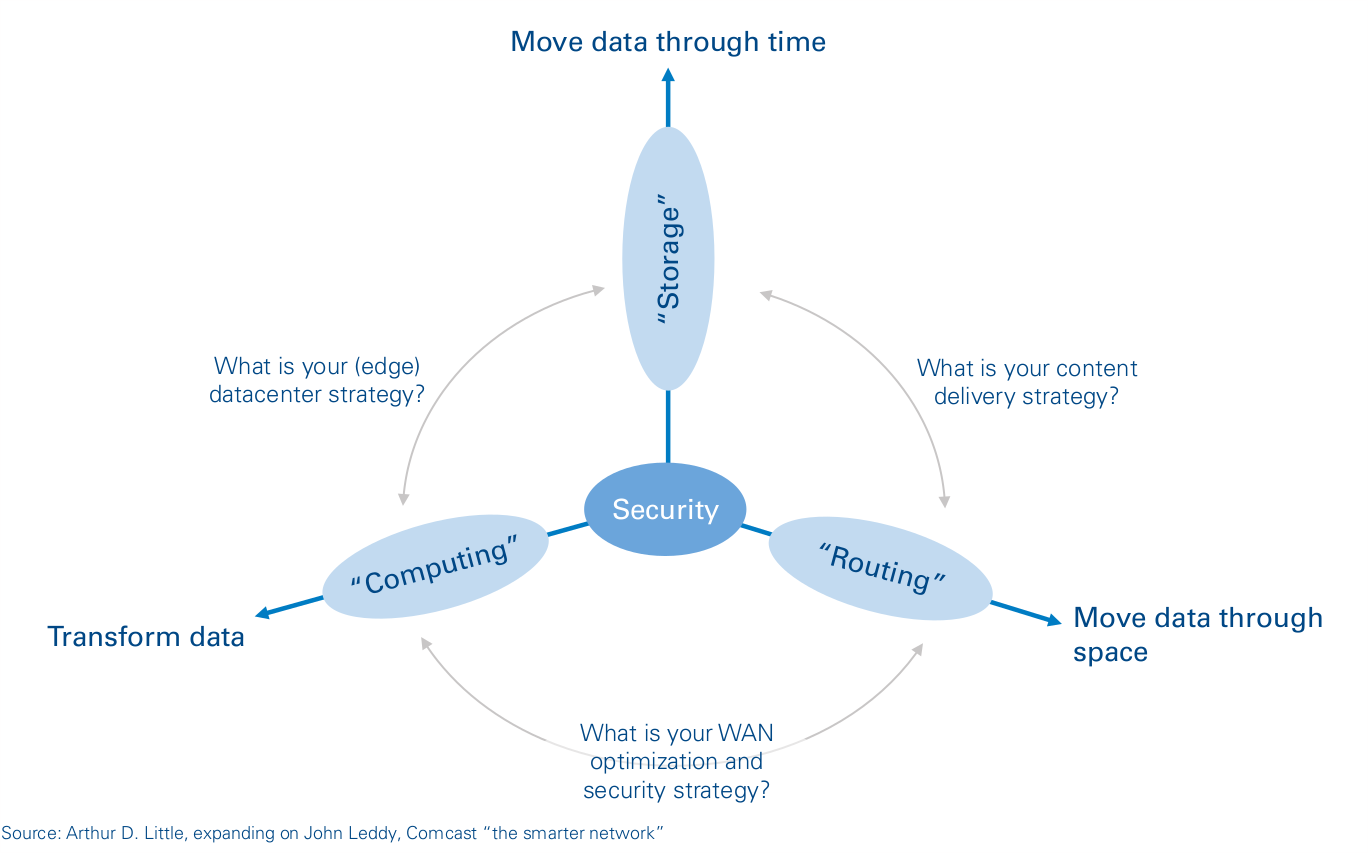
DOWNLOAD
DATE
Contact
Consumers and businesses around the world increasingly demand virtually instantaneous digital experiences in whatever they do. Many industries have already embraced the related opportunities in serving their customers instantaneously and seamlessly, and in reengineering their business models and digital production methods accordingly. The more companies digitize – whatever that may mean in each individual context – the more instant digital interactions matter. These expectations are the key driver behind industrial digitization.
Looking back, as digitalization gained steam over the past decade it also drove a revolution in computing. Cloud computing began to spread, ways to leverage massive parallel computing were invented, storage technologies significantly accelerated, new file systems and new ways to store and retrieve data were invented, and so forth.
However, the products and services telecommunication operators provide to enterprises have not evolved at the same pace. Despite a few facts:
- Virtually all traffic (consumer and business) connects users to enterprises
- All networks terminate with computers or servers of one form or another
- Any acceleration in computing automatically lays incremental demands on networks, too
- Finally, we expect many new, high-performance use cases emerge in the next 5 years
Are today’s enterprise networks fit for the task?
The good news is that telecommunication service providers continue to increase bandwidth in their access networks for both consumers and enterprises. Thus, we expect consumed bandwidths and transported data volumes to 5-10 fold over the next 5 years.
But when interviewing the infrastructure responsible executives of enterprise customers across industries, we learn that when they think about their future of enterprise networking, they do not think about bandwidth increases. To them this is by far not anymore the most important aspect when buying a corporate network. Automate-ability, availability, security, scalability all rank higher than performance.
To enterprises, automation is no longer a hype, but founded in functional and security requirements. Automation must span all infrastructure aspects: computing, storage, security and networking. Those operators believing that SD-WAN is merely a cost-saving technology are off the mark: it is about enabling enterprise infrastructure to support agile development approaches spanning multiple cloud environments and providing significantly enhanced cyber security capabilities, next to improved manageability for their corporate customers’ operators.
Enterprise architects want to manage their networks via their own applications – both network oriented applications, e.g. for internal IT departments as well as non-network oriented applications. Some will even issue design policies making their applications network aware.
We believe operators must rethink their approach to enterprise networking and offer a comprehensive and integrated portfolio of services meeting the entire CIO-infrastructure agenda: computing, storage, security and networking. Or be superseded out by others who do.
1. Enterprise networks are at the heart of digitization
We have observed that while the various aspects of computing and security are evolving at blazing speeds, networks aren’t. This is not to say they don’t deliver more throughput – on the contrary. But most networks have not evolved in their capabilities. In this report we will describe what these capabilities could be.
Enterprise infrastructure executives have told us in interviews that many operators, with all of their ICT growth ambitions, do not yet have a comprehensive answer to the evolution of enterprise networking. If this is true, operators are risking existing revenue streams and leaving money on the table for enhanced services in the networking space. This misalignment between demand and supply leaves many enterprises’ no option but to satisfy their networking needs elsewhere. Enterprises demanding – beyond bandwidth – automation, security, availability and overarching performance increasingly need to revert to “do-it-yourself” (DIY) models, stitching together solutions from non-telecom-operator networking companies.
Figure 1: Three things that can be done to data

Before diving into the topic deeper, we need to establish two thoughts:
1) Virtually all traffic (consumer and business) connects users to enterprises. The share of peer to peer traffic is generally low
Take sending an email as an example: this is traffic running between users and a mail-server operator such as Microsoft, Google, ISPs, telecommunication providers, et al. Another example could be file sharing (e.g., a video) – which requires companies such as Dropbox, Amazon, Facebook and Google to support it. Very little traffic actually runs between users. This is in stark contrast to what telecommunication operators would normally do: transmission of voice (which is peer to peer), sending of an SMS (in contrast to WhatsApp) or torrent downloads (in contrast to other file-sharing platforms). But overall, we estimate that more than 90% of all data traffic is not in a consumer-to-consumer context.
2) Enterprises need to satisfy the demand for an instantaneous end-user/device experience.
They must manage their applications and infrastructures highly efficiently and from an end-to-end perspective. Network connectivity is one part of this, and so are cloud computing and data storage.
Essentially, there are three things enterprises do to data 1 :
- They move data through space: which is called routing.
- They move data through time: which is called storage.
- They transform data: which is called computing
Of course, all of this needs to happen securely.
In this report we will outline how the increase in industrial digitization has already led to new forms of computing and is pushing the limits of enterprise networking.



